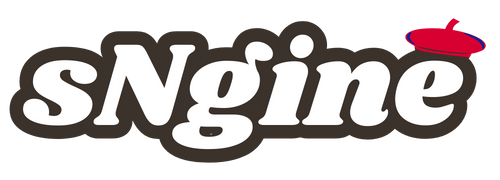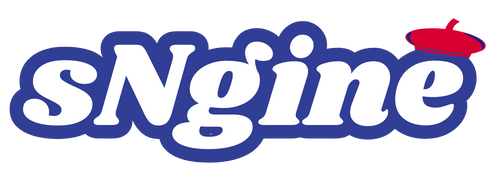The Sodium Silicate Market is witnessing significant expansion globally, driven by its diverse applications across industries including detergents, construction, water treatment, and automotive sectors. Increasing demand for eco-friendly and cost-effective materials is propelling market growth, while rising industrialization in emerging economies provides substantial opportunities for market stakeholders.
Sodium silicate, often referred to as water glass, serves as a versatile chemical compound essential in various industrial processes. Its utilization in adhesives, pulp and paper, and textile industries is contributing to sustained demand. Market analysts forecast that continuous innovations in product formulations will further boost adoption rates over the coming years.
Key drivers influencing the Sodium Silicate Market include the growing preference for sustainable construction materials and its application in wastewater treatment. Additionally, the chemical’s cost-effectiveness compared to alternatives ensures high industrial usage. However, market growth faces challenges from the fluctuating prices of raw materials and the availability of substitute products.
Request a Sample Report: https://researchintelo.com/request-sample/575
Market Dynamics and Segmentation
The Sodium Silicate Market is segmented based on type, application, and region. Types include powder, liquid, and flake forms, with liquid sodium silicate dominating due to its ease of use and adaptability in multiple industrial processes. Application segments cover detergents & cleaning agents, construction, water treatment, pulp & paper, and automotive, among others.
From a regional perspective, Asia-Pacific leads the market, accounting for the largest share in 2024, followed by North America and Europe. Rapid industrial growth in China and India, coupled with increasing construction activities, fuels regional demand. Meanwhile, North America and Europe are witnessing steady growth due to stringent environmental regulations favoring chemical compounds used in water treatment.
Global market value for sodium silicate is projected to reach USD 5.8 billion by 2030, growing at a CAGR of 6.2% during 2024–2030. Rising infrastructure projects, expansion of detergent and cleaning product industries, and increased industrial investments in emerging economies are primary contributors to this growth trajectory.
View Full Report: https://researchintelo.com/report/sodium-silicate-market
Key Market Drivers
-
Industrial Demand: Sodium silicate is widely utilized in manufacturing processes, including adhesives, sealants, and detergents.
-
Environmental Regulations: Increased focus on eco-friendly water treatment chemicals boosts market adoption.
-
Construction Industry Growth: The compound is integral to cement and refractory applications, supporting infrastructure development.
-
Cost Efficiency: Compared to other chemicals, sodium silicate offers an affordable solution for multiple industrial uses.
Conversely, challenges such as price volatility in silica and sodium carbonate, the main raw materials, and competition from alternative chemical compounds can restrain market growth. Market participants are focusing on research and development to enhance product quality and expand application areas.
Enquire Before Buying: https://researchintelo.com/request-for-customization/575
Opportunities in the Sodium Silicate Market
Emerging economies present high-growth potential due to rapid urbanization, increasing industrialization, and government investments in water treatment and infrastructure. Innovations in eco-friendly and energy-efficient production processes further open new avenues for manufacturers and investors.
The automotive industry is another promising area, as sodium silicate is used in protective coatings and heat-resistant components. Additionally, growing consumer awareness around hygiene and cleanliness is expected to drive the detergents and cleaning agents segment.
Future opportunities include leveraging technological advancements to develop more stable, high-performance formulations suitable for a wider range of industrial applications. Sustainable sourcing of raw materials also aligns with global green initiatives, strengthening market appeal.
Check Out the Report: https://researchintelo.com/checkout/575
Regional Insights
-
Asia-Pacific: Dominates the market with extensive industrial activities, construction projects, and growing environmental regulations.
-
North America: Steady growth fueled by advanced water treatment infrastructure and industrial chemical innovations.
-
Europe: Expanding use in detergents and paper industries, coupled with strict environmental compliance.
-
Latin America & Middle East & Africa: Gradual adoption due to infrastructure development and increasing awareness of industrial water treatment benefits.
These regional trends indicate that global demand for sodium silicate will continue to rise, with Asia-Pacific maintaining a lead position while other regions steadily expand market share.
Technological Advancements and Innovations
Advancements in sodium silicate production techniques, such as continuous processing and enhanced purity levels, are positively influencing market growth. Innovations targeting specialized applications, like heat-resistant coatings, adhesives, and environmentally safe detergents, are opening new market avenues.
Moreover, research into hybrid formulations combining sodium silicate with other chemicals is providing improved performance in construction and automotive industries. As sustainability becomes a key priority, manufacturers are exploring bio-based and low-emission production methods to meet global standards.
Market Outlook and Future Trends
The Sodium Silicate Market is expected to experience consistent growth through 2030, driven by diverse industrial applications, environmental awareness, and increasing adoption in developing countries. The rising preference for green chemicals in water treatment and detergents positions sodium silicate as a strategic compound for industrial players.
In addition, the integration of digital technologies and automation in manufacturing plants is expected to optimize production efficiency and reduce operational costs. The compound’s versatility across industries ensures long-term relevance, making it an attractive option for investors and manufacturers alike.
Conclusion
The Sodium Silicate Market presents a robust growth landscape driven by industrial demand, environmental initiatives, and technological innovations. With significant opportunities in emerging economies and sustainable applications, stakeholders can capitalize on expanding demand. Research Intelo’s insights provide a comprehensive understanding of market dynamics, trends, and future prospects, ensuring informed decision-making for investors and industry participants.


